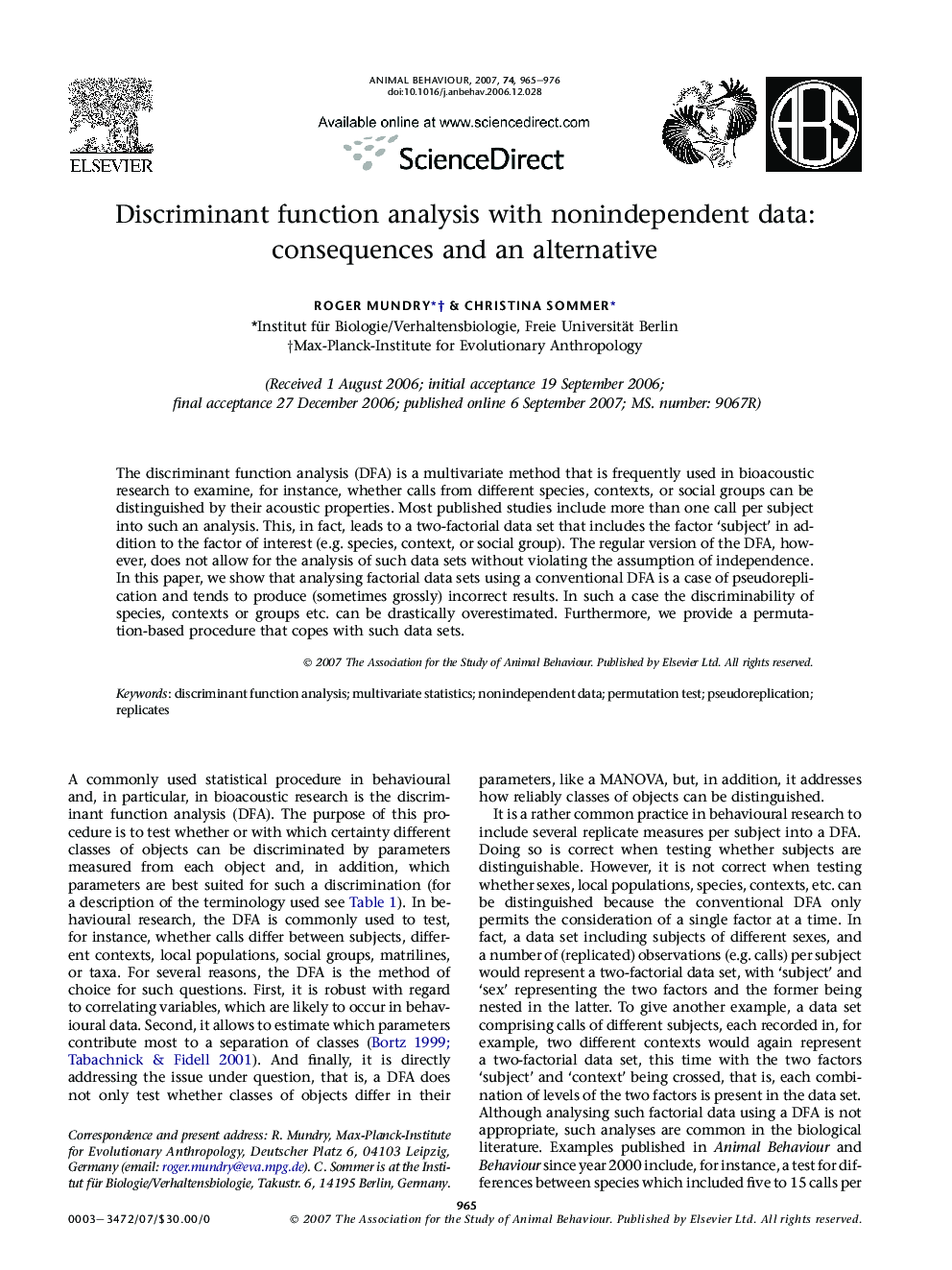| Article ID | Journal | Published Year | Pages | File Type |
|---|---|---|---|---|
| 2418242 | Animal Behaviour | 2007 | 12 Pages |
The discriminant function analysis (DFA) is a multivariate method that is frequently used in bioacoustic research to examine, for instance, whether calls from different species, contexts, or social groups can be distinguished by their acoustic properties. Most published studies include more than one call per subject into such an analysis. This, in fact, leads to a two-factorial data set that includes the factor ‘subject’ in addition to the factor of interest (e.g. species, context, or social group). The regular version of the DFA, however, does not allow for the analysis of such data sets without violating the assumption of independence. In this paper, we show that analysing factorial data sets using a conventional DFA is a case of pseudoreplication and tends to produce (sometimes grossly) incorrect results. In such a case the discriminability of species, contexts or groups etc. can be drastically overestimated. Furthermore, we provide a permutation-based procedure that copes with such data sets.
